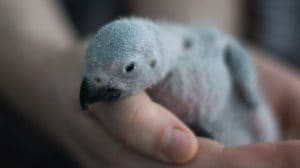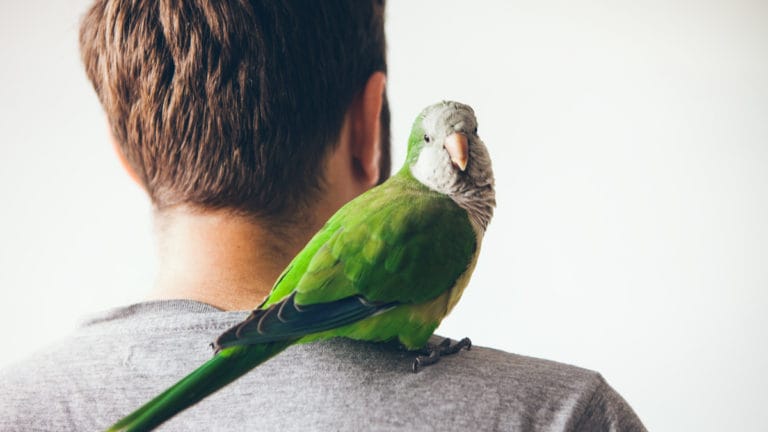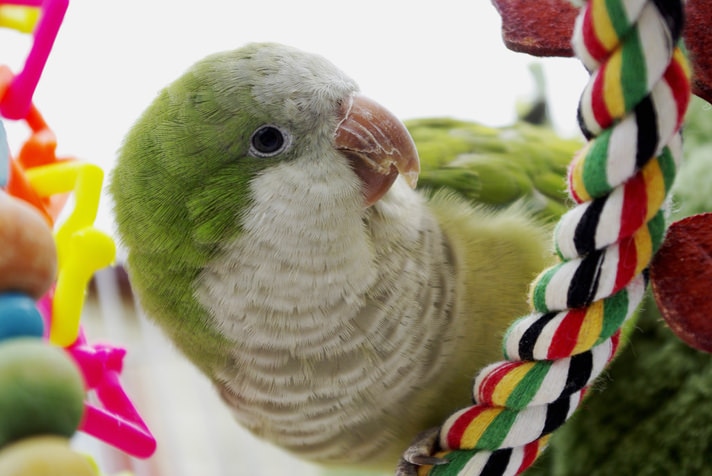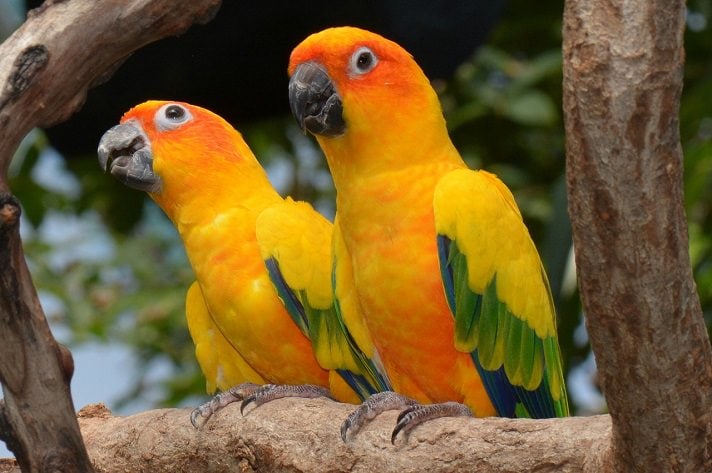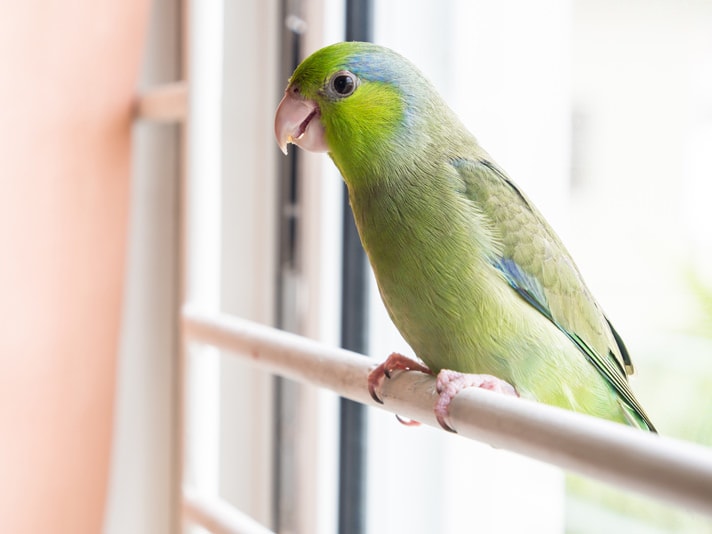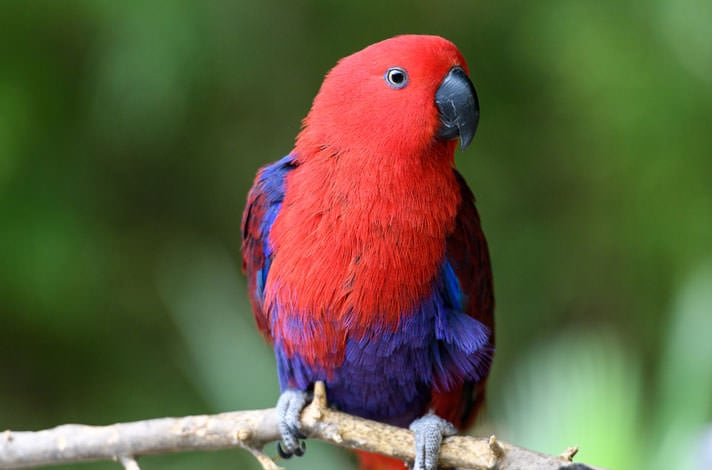Whether you’re a bird breeder new to your profession or a pet bird owner, it’s a good idea to know the basics of hand-feeding in case of an emergency situation.
If you find yourself in scenarios like your pair of parrots are no longer taking care of their chicks or your pet bird becomes ill and requires hand-feeding. you may be wondering, “What can I do to get my parrots to eat?”
Below are 14 hand-feeding tips to help you get your pet bird to eat at the palm of your hands.
14 Hand-Feeding Tips
- Before hand-feeding a pet bird or parrot, get hands-on training from a breeder or other professional. You should be quite comfortable with the procedure before starting out on your own.
- Always wash your hands thoroughly before hand-feeding baby birds.
- For convenience and best results, use a commercial hand-feeding formula, and follow package instructions. Most include details on water-to-solid ratio based on the bird’s age. Younger birds require more liquid than older chicks.
- Prepare a fresh batch of hand-feeding formula for each feeding. Bacteria quickly proliferate. Don’t be tempted to save leftover formula.
- Depending on the source, the advised temperature range for formula ranges between 100 and 108 degrees Fahrenheit for most species. Again, consult package directions, your avian veterinarian and an experienced breeder for species-specific advice. Longtime bird store professional Barbara Landsper of Long Island, New York, has hand-fed everything from budgies to macaws and says the birds she’s worked with have done best with parrot bird food at temperatures between 105 to 108 degrees Fahrenheit. My Senegal babies ate best when their food temperature was 103 degrees Fahrenheit.
- Heat hand-feeding formula according to package instructions. Microwaving can cause the mixture to develop “hot spots,” which result in crop burns. Instead, mix and heat formula in a double-boiler or inside a bowl placed inside a pot of hot water. Keep the feeding dish in a bowl of warm water to maintain temperature during feeding sessions.
- Stir formula thoroughly prior to measuring the temperature. Keep the thermometer in the food for continual monitoring. Confirm its bird-safe temperature with a drop on the inside of your wrist just as people do with baby bottles.
- Read articles and talk to other hand-feeders about the best hand-feeding utensil. Different theories abound as to whether to hand-feed with a spoon, syringe, feeding tube, etc.
- Place the bird on an easy-to-grip surface, such as a towel or dishcloth.
- Gently grip the bird’s head from behind, stretching the neck ever so slightly and steadying the lower beak with a finger or thumb.
- Touch the lower left side of the beak (the bird’s left) with the feeding implement, and angle the tip of the utensil toward the right side of the bird’s throat. The esophagus is located on the bird’s right side (it will be on your left as the bird faces you) and the windpipe runs down the center of the neck. Touching the feeding implement to the beak will usually elicit the feeding response, which involves the bird eagerly ‘pumping’ the food down into its crop.
- Release the food slowly. Do not flood the beak or trachea. Feeding quantity and frequency depends on the age and size of the bird. Consult a breeder and read package directions for specific advice.
- Smaller species and very young birds require more frequent feedings. The rapid growth phase in the second and third weeks often requires more food, but be careful not to overfeed your bird. The crop should feel full after feeding but should empty within three to four hours. If, after adjusting the feeding schedule, food remains in the crop for long periods, consult an avian veterinarian.
- Assess your bird’s progress by weighing it before and after feedings. If your young parrot or sick bird starts losing weight, consult a veterinarian immediately. Some weight loss is normal, however, during the weaning process. It’s nature’s way of preparing the chubby baby bird for flight.
Bird Hand-Feeding Troubleshooting
Is your bird refusing food? Check the temperature.
Is it too cool or too hot? Cold formula can cause “slow crop,” meaning the food passes too slowly.
Does your bird’s mouth smell sour? Get it to a veterinarian immediately. It may have “sour crop,” the result of food not passing through or becoming impacted in the crop. It’s likely that you’re smelling a bacteria buildup. The vet can remove the crop’s contents, flush it and administer an antibiotic and anti-fungal medicine.
Is your bird eating really quickly? If you feed your chick too quickly, your bird could aspirate formula and drown or develop pneumonia.
Does your bird’s poop not look normal? A healthy chick’s droppings should look like normal bird poop with feces and white urates. Runny food could cause extra clear matter in the droppings, because the bird is not receiving enough nutrition from food passing too quickly. Dry feces with clear liquid could indicate that your formula is too thick, which does not allow the bird properly digest it. Crop impaction or sudden death could occur in chicks if solid levels are too high.
Do you have any other food questions that you want answers to for your pet bird? Check out:
Posted by: Chewy Editorial
Featured Image: Via Papooga/Flickr
Share:
